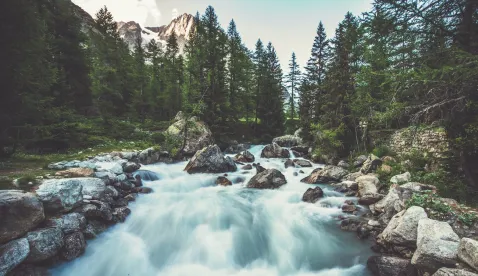What happened: Last week the Senate passed a landmark piece of legislation – the Great American Outdoors Act. Under the legislation, the Land and Water Conservation Fund (LWCF) would be permanently and fully funded at $900 million annually rather than funding levels being determined by the congressional appropriations process each year.
What is next: The legislation now heads to the House of Representatives, where there is considerable bipartisan support for the bill. According to House Majority Leader, Steny Hoyer (D-MD), the lower chamber is expected to consider and pass the legislation during the congressional work period at the end of July.
Who should care: States, local governments (cities, towns, and counties), and tribal governments are eligible to receive LWCF funding. Construction companies, developers, community-based non-profits, community developers, and others may also benefit from the program.
How do local governments access LWCF funding? Local governments must apply to their state to receive LWCF funding.
Our Public Policy Team has been actively monitoring recent congressional action on the Great American Outdoors Act, legislation that contains a key provision to provide permanent funding from the LWCF.
The LWCF was established by Congress in 1964, the result of a bipartisan commitment to protect natural areas and to enhance recreational opportunities across the United States. The establishing legislation authorized the collection each year of $900 million in royalties from originally from offshore oil and gas leases in the Outer Continental Shelf to be deposited in the Treasury for the purpose of conservation. However, the allocation of these funds has remained subject to the annual Federal appropriations process, with funding provided by Congress varying widely from year to year.
The LWCF is unique in that, throughout its history, it has benefited every state and county without the expenditure of tax dollars. The Fund supports recreation and conservation through the acquisition and protection of federal public lands, waters, wetlands, and easements under the Department of the Interior (National Park Service, Fish and Wildlife Service, and the Bureau of Land Management), and US Forest Service.
The LWCF also provides matching grants to state, local, and tribal governments for the acquisition and development of state and local parks and other outdoor recreation sites through the “Stateside” Program administered by the National Park Service. By statute, federal payments to states (including the District of Columbia and US Territories) are limited to 50% of a project’s total cost with the state project sponsor assuming the remaining balance.
There are two types of Stateside Program grant awards: traditional (or formula grants), and competitive grants. Both programs provide states with the opportunity to sub-award grants to state agencies, local units of government, and federally recognized Indian tribes.
Traditional matching grants to states are made on an annual basis by the Secretary of the Interior according to a formula within the LWCF establishing legislation, as well as by need. By statute, states have no more than three years to obligate appropriated funds, which can be used for outdoor recreation planning, acquisition of lands and waters, developing new recreational and related facilities, or redeveloping existing facilities.
A state must prepare a statewide outdoor recreation plan addressing specific needs and opportunities for recreation in order to be eligible for LWCF grant funding. A plan must be approved by the Secretary of the Interior through the National Park Service. States then award grant funding for projects to eligible entities through a competitive, open selection process. According to the Congressional Research Service, more than 42,000 traditional state grants have been awarded over the course of the program since its inception in 1965.
The National Park Service also administers competitive state grants through the Outdoor Recreation Legacy Partnership Program. These grants support land acquisition and outdoor recreation projects, and are provided on an annual basis to communities of 50,000 or more people with priority given to economically disadvantaged communities that lack recreational opportunities.
Additionally, the LWCF funds other conservation grants, including the American Battlefield Land Acquisition Grant Program, Cooperative Endangered Species Conservation Fund, and the Forest Legacy Program.
In addition to permanently funding the LWCF, the Great American Outdoors Act notably creates a National Parks and Public Land Legacy Restoration Fund to support deferred maintenance projects on national parks and other public lands. Half of all federal revenue from oil, gas, coal, or renewable energy on federal lands will be deposited into the Restoration Fund, with funds not exceeding $1.9 billion per fiscal year, for a total of $9.5 billion over a five-year period. The National Park Service presently has a $12 billion backlog in deferred maintenance projects; 70% of the Restoration Fund will be devoted to these efforts. The remaining 30% is to address deferred maintenance needs within the Bureau of Land Management (5%), Fish & Wildlife Service (5%), US Forest Service (15%), and the Bureau of Indian Education (5%).
On June 17, the Senate passed the Great American Outdoors Act by a bipartisan vote of 73-25, and the House of Representatives is expected to approve the measure in July. President Trump has committed to signing the legislation upon House passage.
While the LWCF authorizes $900 million in annual appropriations, it has rarely been funded at the fully authorized level. In fiscal year 2020, Congress allocated $495 million from the Fund, and the President’s fiscal year 2021 budget request proposed only $131 million in appropriations. The enactment of the Great American Outdoors Act would provide each year the fully authorized level of $900 million for LWCF purposes.
Ways state and local governments can use the funds: Local governments can use LWCF funds to buy land from willing sellers at market value. This can be land from private owners, businesses, or a land trust, for example:
-
Any lands purchased with LWCF state and local assistance funding must be used for recreation purposes in perpetuity; these funds can be for purchasing and developing playgrounds, soccer fields, walking/biking paths, multi-use athletic courts, and ballparks, among other uses.
-
In addition, LWCF funding can be used to construct structures and facilities such as restrooms, visitor centers, seating areas, picnic pavilions, boardwalks, ADA-accessible bleachers, and other features that support outdoor recreation.





 />i
/>i

